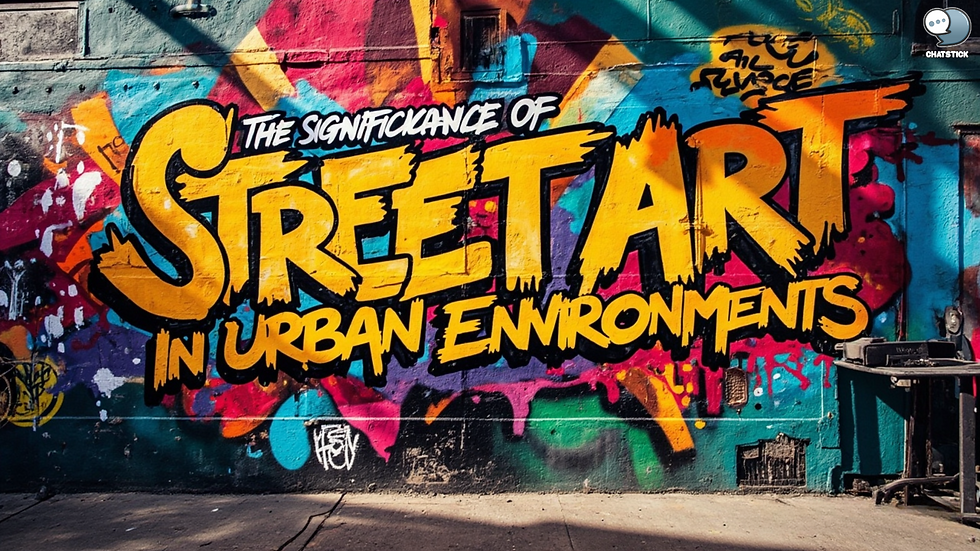The use of digital tools in public art and installation
- ChatStick For Brand
- Jun 24, 2023
- 2 min read
In recent years, the world of public art and installation has undergone a significant transformation thanks to the integration of digital tools. Traditional forms of artistic expression have merged with technology, resulting in captivating and interactive experiences for audiences. Digital tools have provided artists with new avenues for creativity, enabling them to push the boundaries of their craft and engage with the public in innovative ways. This article explores the exciting use of digital tools in public art and installation, highlighting their impact on the artistic landscape.
Interactive and Immersive Experiences:
Digital tools have opened up a realm of possibilities for creating interactive and immersive experiences in public art and installation. Augmented reality (AR) and virtual reality (VR) technologies allow artists to overlay digital elements onto the physical world, transforming ordinary spaces into captivating and dynamic environments. By using mobile devices or specialized headsets, viewers can engage with artwork on a whole new level, exploring virtual landscapes, interacting with virtual objects, and even altering the artwork itself.
Data Visualization and Sensor-based Art:
Digital tools have also enabled artists to harness the power of data and sensors to create thought-provoking installations. By collecting and visualizing data from various sources, artists can highlight social, environmental, or cultural issues in a visually compelling manner. Sensor-based artworks, equipped with sensors that respond to environmental stimuli such as light, sound, or movement, create dynamic and responsive installations that adapt to the viewers' presence or the surrounding environment.
Projection Mapping:
Projection mapping has revolutionized the way public spaces can be transformed through light and motion. By using digital projectors, artists can project dynamic images and videos onto irregular surfaces such as buildings, sculptures, or natural landscapes. This technique allows for the creation of visually stunning and immersive experiences, blending the physical and digital realms seamlessly.
Collaborative Art and Community Engagement:
Digital tools have made it easier for artists to collaborate with communities and involve the public in the creation of public art and installations. Through online platforms, social media, or mobile applications, artists can crowdsource ideas, gather feedback, or even allow people to contribute directly to the artwork. This interactive and participatory approach fosters a sense of community ownership and connection to the artwork, making it more meaningful and relevant to the local population.
Preservation and Documentation:
Digital tools have also played a crucial role in preserving and documenting public art and installations. With the ephemeral nature of some artworks, digital technologies allow artists to capture and record their creations, ensuring their legacy lives on beyond their physical existence. High-resolution photography, 3D scanning, and virtual galleries enable the public to experience and appreciate artworks even after they have been removed or changed.
Conclusion: The integration of digital tools in public art and installation has expanded the possibilities for artistic expression, creating immersive experiences, fostering community engagement, and preserving artwork for future generations. Artists now have a rich palette of digital technologies at their disposal, enabling them to push the boundaries of creativity and engage with audiences in unprecedented ways. As technology continues to evolve, the realm of public art and installation will undoubtedly be further shaped and transformed, bringing forth new and exciting possibilities for both artists and viewers alike. #DigitalArt #PublicArt #ArtAndTechnology #InteractiveInstallations #AugmentedReality #DataVisualization #ProjectionMapping #ImmersiveExperiences #CommunityEngagement #ArtisticInnovation






Comments